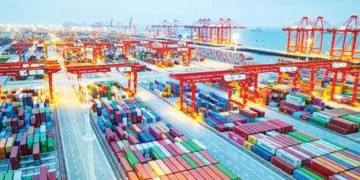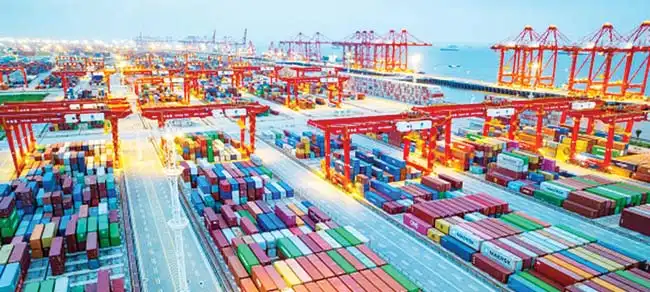Blitz Bureau
NEW DELHI: Across the oceans runs the current of India’s economic strength. Nearly 95 per cent of the country’s trade by volume and around 70 pc by value still traverses the nation’s maritime routes, highlighting the sea as the lifeblood of India’s commerce.
With globalisation deepening supply chain interdependence and India emerging as a major manufacturing and energy hub, the efficiency of ports and shipping directly influences national competitiveness. In a bold move to position itself as a global maritime powerhouse, India has set sail with the Maritime India Vision 2030 (MIV 2030), a transformative roadmap launched in 2021. With over 150 strategic initiatives, the vision seeks to modernise ports, expand shipping capacity, and strengthen inland waterways.
Transformative leap
Charting a new course for economic growth, India’s maritime sector is cruising ahead with record performance across ports, coastal shipping, and inland waterways. The country’s ports sector has witnessed a transformative leap, with total port capacity nearly doubling from 1,400 million metric tonnes per annum (MMTPA) to 2,762 MMTPA, reflecting major investments in modernisation and infrastructure.
Cargo handling volumes have grown impressively from 972 MMT to 1,594 MMT, signaling robust growth in maritime trade and port efficiency with major ports handling approximately 855 million tonnes of cargo in FY 2024-2025.
Operational performance has improved significantly, as the average vessel turnaround time has been reduced from 93 hours to just 48 hours, enhancing overall productivity and global competitiveness. India’s shipping sector has charted steady growth, with the number of Indian-flagged vessels rising from 1,205 to 1,549, reflecting the nation’s expanding maritime presence.
Expanding presence
The gross tonnage of the Indian fleet has increased from 10 million gross tonnes (MGT) to 13.52 MGT, underscoring a stronger and more capable shipping capacity. Coastal shipping has gained significant momentum, with cargo movement nearly doubling from 87 MMT to 165 MMT, reinforcing the shift toward efficient, low-cost, and ecofriendly transport modes. In a landmark development for inland water transport sector, the Inland Waterways Authority of India (IWAI) reported a record cargo movement of 146 MMT in 2025, up from 18 MMT in 2014, an increase of around 710 per cent.
The number of operational waterways has increased remarkably from three to 29, reflecting a major boost to India’s inland transport network. The MIV 2030 projects a total investment of Rs 3-3.5 lakh crore across ports, shipping, and inland waterways. Backed by a recent landmark package of Rs 69,725 crore to boost shipbuilding and revitalise the maritime ecosystem, India is charting a strategic course to leverage its vast coastline to anchor itself firmly on the global maritime map.
With a Rs 25,000-crore corpus, the Maritime Development Fund (MDF) is set to provide long-term financing to expand India’s shipping tonnage and shipbuilding capacity.
Complementing this, the revamped Shipbuilding Financial Assistance Scheme (SBFAS) with an outlay of Rs 24,736 crore, tackles domestic cost disadvantages and incentivises ship-breaking. Over Rs 1,000 crore has been invested in the development of Inland waterway infrastructure across northeast India, marking a significant push to enhance transportation and trade through the country’s river networks.
Sagarmala, a flagship initiative to transform India into a global maritime hub, is a core pillar of the Maritime India Vision 2030 and Maritime Amrit Kaal Vision 2047. The programme focuses on cutting logistics costs, enhancing trade efficiency, and creating employment through smarter, greener transport networks.
India’s maritime sector is entering a decisive decade, with new laws, mega projects, and global investment ambitions shaping the Maritime India Vision 2030.
Long-term roadmap
Building onto this foundation is the Maritime Amrit Kaal Vision 2047, a long-term roadmap for India’s maritime resurgence, with investments of nearly Rs 80 lakh crore earmarked for ports, coastal shipping, inland waterways, shipbuilding, and green shipping initiatives. The Government is driving sustainable maritime operations by setting up green corridors, introducing green hydrogen bunkering at major ports, and promoting the use of methanol-fueled vessels. Outlining more than 300 actionable initiatives, it projects India’s rise as one of the world’s top maritime and shipbuilding powers by the centenary of independence.
































